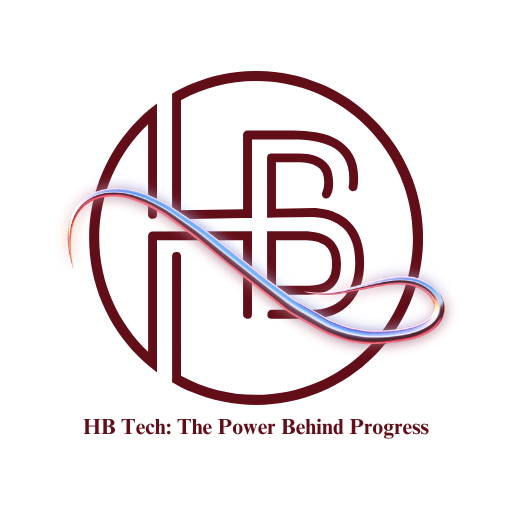In today ’s world, data is everywhere. Every time you shop online, watch a video, or even walk with a fitness tracker, data is being collected. But raw data alone isn’t enough to help businesses or organizations grow. This is where data analytics comes in. It ’s the process of examining data to find patterns, trends. and insights that can guide decisions and solve problems.
In this blog, we’ll break down what data analytics is, why it matters, and how it’s used in everyday life.
Data Analytics

Data analytics involves studying data to understand what ’s happening, why it’s happening, and what might happen in the future. It helps turn numbers and information into something meaningful.
There are four main types of data analytics;
- Descriptive Analytics: Looks at past data to understand what has already happened.
- Diagnostic Analytics: Explains why something happened.
- Predictive Analytics: Uses data to predict future trends or outcomes.
- Prescriptive Analytics: Recommends actions based on the analysis.
For example, if a company notices a drop in sales (descriptive), they might look for the reason (diagnostic), predict future sales trends (predictive), and suggest new strategies to boost sales (prescriptive).
Why is Data Analytics Important?
Data analytics has become a valuable tool across all industries. Here’s why:
- Better Decisions
Analyzing data helps businesses make smarter choices. For example, understanding customer preferences can help a store stock the right products. - Saves Time and Money
Data can reveal inefficiencies, allowing businesses to fix them quickly. For example , factories can use data to predict when machines might break down and perform maintenance ahead of time. - Improved Customer Experience
Companies like Netflix and Spotify use data analytics to recommend shows, movies, or songs that match your tastes. This personalization keeps customers happy and engaged. - Staying Competitive
Data analytics helps businesses keep up with market trends and stay ahead of competitors. - Managing Risks
Banks use data to detect fraud and assess loan risks, making their operations safer and more reliable.
Tools and Techniques Used in Data Analytics
To analyze data effectively, experts use various tools and methods, including;
- Spreadsheets: Tools like Microsoft Excel for basic calculations and visualizations.
- Programming: Python and R are common for advanced analysis and creating custom solutions.
- Visualization Tools: Platforms like Tableau and Power BI make it easy to create charts and graphs.
- Big Data Tools: Technologies like Hadoop and Spark handle massive amounts of data.
- Machine Learning: Algorithms help predict outcomes and uncover hidden patterns.
Real-Life Uses of Data Analytics
Data analytics is making a difference in many areas, including:
- Healthcare
Doctors use data to create personalized treatments and predict health trends. - Retail
Stores analyze shopping habits to decide what to stock and how to arrange products for maximum sales. - Finance
Banks monitor transactions to detect fraud and predict market trends. - Sports
Athletes and coaches use data to improve performance and reduce the risk of injury. - Marketing
Advertisers study campaign performance and customer preferences to create targeted ads that perform better,
Challenges in Data Analytics
While data analytics is powerful, it does come with challenges;
- Data Quality
If the data is incomplete or inaccurate , the results can be misleading. - Privacy Concerns
Using personal data responsibly is critical, especially with strict laws like GDPR in place. - Skill Gaps
Not everyone has the expertise to analyze data, which can slow down its adoption. - Combining Data
Merging information from different sources can be complex and time-consuming.
Next for Data Analytics
The field of data analytics is constantly growing. Here ’s what the future holds:
- AI and Automation: Advanced technologies will make data analysis faster and easier.
- Real-Time Insights: Businesses will rely on live data to make immediate decisions.
- User-Friendly Tools: More tools will be designed for people without technical expertise.
- Ethical Practices: Companies will focus on transparent and responsible use of data.
Data analytics is no longer just for big tech companies—it’s becoming essential for businesses of all sizes. It helps organizations make smarter decisions, improve customer satisfaction , and stay competitive in a fast-changing world.
Whether you’re a student, a business owner, or just curious about technology, understanding the basics of data analytics can open up new opportunities. It’s a powerful tool for solving problems and driving success in almost any field.
Frequently Asked Questions(FAQs)
What is data analytics?
Data analytics is the process of examining data to uncover patterns, trends, and insights. It helps businesses and organizations make better decisions, improve efficiency, and solve problems.
What are the main types of data analytics?
The four main types are:
Descriptive Analytics: Understands what happened in the past.
Diagnostic Analytics: Explains why something happened.
Predictive Analytics: Forecasts future outcomes based on data.
Prescriptive Analytics: Suggests actions to achieve desired results.Why is data analytics important?
Data analytics helps businesses:
Make smarter, evidence-based decisions.
Save time and money by identifying inefficiencies.
Improve customer experiences through personalization.
Stay competitive by tracking market trends.
Manage risks like fraud and system failures.What tools are used in data analytics?
Some commonly used tools include:
Spreadsheets: Excel for basic analysis.
Programming Languages: Python and R for advanced analysis.
Visualization Platforms: Tableau and Power BI for creating charts and graphs.
Big Data Tools: Hadoop and Spark for analyzing large datasets.
Machine Learning Algorithms: For predictions and deeper insights.What does the future of data analytics look like?
The future of data analytics includes:
AI and Automation: Faster and more accurate analysis.
Real-Time Data: Immediate insights for quicker decisions.
User-Friendly Tools: Making analytics accessible to non-technical users.
Ethical Data Practices: Focusing on privacy and responsible data use.









